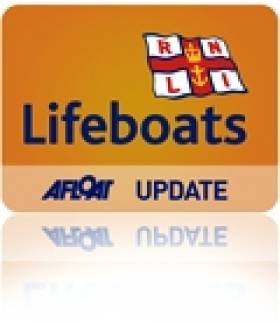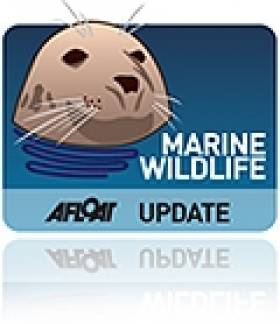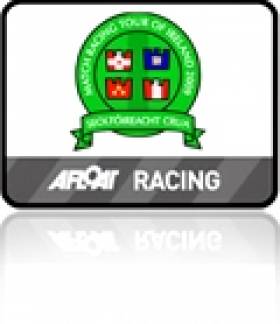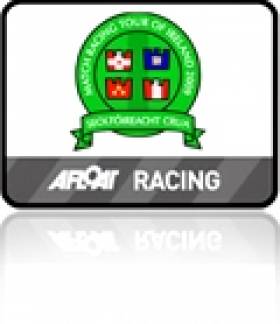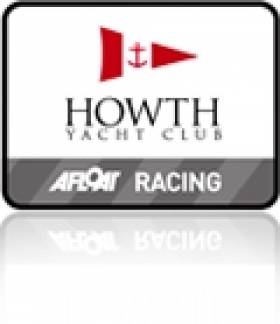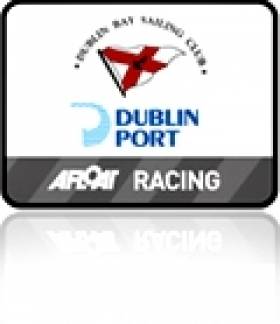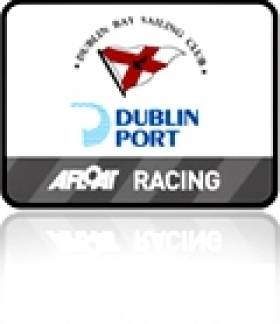Displaying items by tag: Dublin Bay
Dun Laoghaire Lifeboat to Stage Open Day
Visitors to RNLI at Dun Laoghaire will be able to view the new inshore lifeboat (ILB) that recently arrived when the station holds its annual open day on Saturday 31st July 2010 (11am to 5pm). For the first time, the recently-formed Sea Safety team will also be on hand to offer advice to visitors on how best to prepare for trips afloat and boating activities.
Equipment demonstrations and model boat displays will also be part of the attractions including the station’s All-Weather lifeboat (ALB). Crew-members, who operate on a fully-voluntary basis will be demonstrating various items of rescue equipment and the ALB " Anna Livia" will be along side offering close-up views of this €2 million rescue craft.
There are two lifeboats at Dun Laoghaire, a Trent class ALB and a D-ClassILB (Inshore lifeboat) of the new IB1-type that was recently delivered to the 207-year old station and is based in the nearby historic boathouse at the East Pier. This lifeboat, named ‘Realt Na Mara’ , was funded by thegenorisity of a family in Dublin.
The station’s shop selling souvenirs and other lifeboat-related items willalso be open, helping to raise funds for the voluntary service. The SeaSafety team, part of the RNLI’s stated aim of improving safety at seathrough education and information can also take bookings for the free ‘SeaCheck’ service that assists boat-owners.
The Dun Laoghaire RNLI station is one of 43 based in the Ireland divisionthat operate 55 lifeboats that launched on 976 occasions and rescued 1,008people in 2009. Dun Laoghaire is regularly amongst the busiest and lastyear launched on 68 occasions and rescued 92 people.
For more information, please visit www.dunlaoghaire-lifeboat.ie
Related Safety posts
RNLI Lifeboats in Ireland
Safety News
Rescue News from RNLI Lifeboats in Ireland
Coast Guard News from Ireland
Water Safety News from Ireland
Marine Casualty Investigation Board News
Marine Warnings
'Prospect' Offers Good DBSC Odds
BENETEAU 31.7 Echo- 1. Levante (B.Leyden/M.Leahy), 2. Violet Flame (B.Murphy/L.Osbourne), 3. Extremity (Paul D'Alton)
BENETEAU 31.7 - 1. Prospect (Chris Johnston), 2. Levante (B.Leyden/M.Leahy), 3. Levana (Jean Mitton)
CRUISERS 0 Echo - 1. Lively Lady (Derek Martin), 2. Tsunami (Vincent Farrell), 3. WOW (George Sisk)
CRUISERS 0 - 1. WOW (George Sisk), 2. Tsunami (Vincent Farrell), 3. Lively Lady (Derek Martin)
CRUISERS 1 Echo - 1. Team Windmill (Andrew Sarratt), 2. Axiom (M.O'Neill), 3. Indecision (Declan Hayes et al)
CRUISERS 1 - 1. Team Windmill (Andrew Sarratt), 2. Something Else (J.Hall et al), 3. Contango (Barry Cunningham)
CRUISERS 2 - 1. Jawesome 11 (V.Kennedy/M.Dyke), 2. Red Rhum (J Nicholson), 3. Jester (Declan Curtin)
CRUISERS 2 Echo - 1. Red Rhum (J Nicholson), 2. Jawesome 11 (V.Kennedy/M.Dyke), 3. Jester (Declan Curtin)
CRUISERS 3 Echo - 1. Supernova (K.Lawless et al), 2. Hard on Port (Flor O'Driscoll), 3. Cries of Passion (Bryan Maguire)
CRUISERS 3 - 1. Supernova (K.Lawless et al), 2. Hard on Port (Flor O'Driscoll), 3. Cries of Passion (Bryan Maguire)
CRUISERS 4 - 1. Ghrazel (Charles Pearson), 2. Aslana (J.Martin/B.Mulkeen), 3. Maranda (Myles Kelly)
FLYING FIFTEEN - 1. Deranged (C.Doorly), 2. Flyer (Niall Coleman), 3. Fifty Somethings (David Mulvin)
GLEN - 1. Glendun (B.Denham et al), 2. Pterodactyl (R & D McCaffrey), 3. Glenmarissa (F.Elmes/W.Higgins)
RUFFIAN 23 - 1. Shannagh (S.Gill/P.MacDiarmada), 2. Nuits St Georges (Alan Kirwan), 3. Diane ll (Bruce Carswell)
SB3s - 1. Mosquito (Paul O'Callaghan et al), 2. Alert Packaging (Justin Burke), 3. Sin Bin (Barry O'Neill)
SHIPMAN - 1. Kelema (N.Blake/Z.Grace), 2. Malindi (B.Smith/A.Gray), 3. Just Good Friends (Michael Carroll)
SIGMA 33 - 1. Rupert (R.Lovegrove/P.Varian), 2. White Mischief (Timothy Goodbody), 3. Leeuwin (Henry Leonard et al)
SQUIB - 1. Kookaburra (P & M Dee), 2. Why Not (Derek & Jean Jago), 3. Anemos (Pete & Ann Evans)
WHITE SAIL CRUISERS Echo - 1. Arwen (Philip O'Dwyer), 2. Xerxes (Dan O'Neill), 3. Nauti-Gal (J & J Crawford)
WHITE SAIL CRUISERS - 1. Arwen (Philip O'Dwyer), 2. Xerxes (Dan O'Neill), 3. Nauti-Gal (J & J Crawford)
Up to 20 expected for ISORA overnight
As many as 20 sailing boats could line out for the ISORA overnight race to the India North buoy tomorrow night. The race starts at 7.30pm, leaving the Muglins to starboard as the fleet heads south to the cardinal mark India North. The forecast is for light offshore breezes, waning further as the race progresses.
The list of starters is attached below, with those marked DNF not taking part. A Notice of Race is also attached.
The race is a 75-miler, and most returning boats should be back in Dun Laoghaire by morning.
Whale Sighting confirmed off Rathlin
The Irish Whale and Dolphin Group believes that the whale spotted off Howth and Dublin Bay last week may be the same marine animal spotted at the foot of cliffs on Rathlin Island. The whale is thought to be moving down the Irish Sea, a rare behaviour for a humpback. Pictures of the sighting have allowed the IWDG identify it as a humpback, but they are waiting for higher-resolution images to match it with its counterpart in Howth.
The whale was spotted off Rathlin on July 11, three days before it surfaced near Dublin. The IWDG has said: "This is an extremely important sighting as it is only the second validated sighting of this species in N. Irish waters.
"In fact, as the previous sighting was closer to Colonsay, Islay, Scotland, we could easily argue that this is in fact the 1st record of a humpback whale in N. Irish waters."
Whales can cover more than 50 miles a day and migrate more than 5,000 miles in a year.
More info on the current crop of sightings can be found on the IWDG website, HERE.
Anyone spotting a whale is required by law to give them at least 100 metres room and travel parallel to their track, unless you want to end up like an unlucky pair of South African sailors, dismasted by a breaching Right Whale off Cape Town this week.
Big Interest in Women's Match Racing
More than 20 ladies from around Ireland took to the water in Dun Laoghaire last weekend for a women's match racing training weekend, which may result in a ladies' Match Racing nationals taking place later in 2010.
A recent rise in interest in match racing combined with the Irish Sailing Association’s drive towards promoting women on the water resulted in full programme organised by experienced match racer Mary O’Loughlin and held in the Royal St George Yacht Club in Dun Laoghaire. Women’s match racing is a recent introduction to the Summer Olympics in 2012 and has received a strong international following in preparation for the games.
Some participants had already had a taste of match racing in the ISA’s Sail Fleet; others were fresh to the scene. Whilst some sailors were weary after a hectic week down in Cork, all were keen to try out the J80’s and get on the water.
After a comprehensive briefing on boat set up, starting procedures, tactics and rules, the ladies took to the water to put their new found knowledge into practice. Weather conditions were varied, sunshine and gentle breezes right around to a gusty force 4 on Sunday afternoon.
Under the guidance of some of Ireland’s top match racers and umpires, they completed two action packed on the water sessions and rounded it off with a closing briefing on the weekend’s racing.
The weekend was thoroughly enjoyed by all of those who took part. Many of the ladies who attended the weekend are keen to continue on in the match racing scene and plans are underway to hold a Women’s Match Racing Nationals later in the yearMeet the Teams - Match Racers Line Out
The International Match Racing Challenge, taking place this weekend in Dublin Bay, has been profiling their twelve teams, six from Ireland and six from around the world, on their site over the last few days. The event is shaping up to be the match racing spectacle of the year, with mixed breeze and flat water anticipated in Dun Laoghaire on Saturday as a low pressure moves in.
The event will take place close to shore in Scotsmans Bay, with racing visible from land, where the Festival of World Cultures will be taking place.
Irish eyes wil be watching top-ranked helm John Sheehy and Andrew Fowler, who has stolen a march on Sheehy in this year's circuit. Marty O'Leary's team, recently returned from the Student Match Racing Worlds, will also be keen to maintain their good form, having mixed it with several professional teams in Crete.
The line-up of skippers is featured below, with individual team profiles are included on the event website, HERE.
Ireland
John Sheehy World Ranking 70
Andrew Fowler World Ranking 163
Maurice O'Connell World Ranking 192
Marty O'Leary World Ranking 815
Graham Elmes World Ranking 1163
Sam Hunt World Ranking Unranked
The World
Keith Swinton (AUS) World Ranking 17
Pete Nicholas (AUS) World Ranking 90
Romain Baggio (FRA) World Ranking 107
Ben Duncan (NZL) World Ranking 194
Lars Hueckstaedt (GER) World Ranking 217
Andrew Cornah (GBR) World Ranking Unranked
Blue Velvet Wins in Howth Yacht Club
HOWTH YACHT CLUB. TUE + SAT SERIES 3 (RACE) 20/07/2010 17 Footer SCRATCH: 1, Rita Lynch/Curley; 2=, Aura I Malcolm; 2=, Leila R Cooper; 17 Footer HCAP: 1, Echo B & H Lynch; 2, Rosemary Curley/Jones; 3=, Aura I Malcolm TUESDAY SERIES 3 (RACE) 20/07/2010 Puppeteer SCRATCH: 1, Blue Velvet C & K Kavanagh; 2, Yellow Peril N Murphy; 3, Enigma D Butler; Puppeteer HPH: 1, Apollo M & D Patton; 2, Nefertari Morgan/Murray; 3, Mr. Punch NiBhraonain/Wilson; Squib SCRATCH: 1, Chatterbox J Kay; 2, Arctic Fox G Barry; 3, Kerfuffle J & H Craig; Squib HPH: 1, Arctic Fox G Barry; 2, Chatterbox J Kay; 3, Shadowfax P Merry; Etchells SCRATCH: 1, Kootamundra Wattle O'Grady/Reilly; 2, Fetching Quinn/O'Flaherty; 3, Jabberwocky S Knowles; SB3 SCRATCH: 1, Investwise D Quinn; 2, Einstein's Nightmare J Wenski; 3, Sin a Bhuifl Guinness/Costigan
Follow the Match Race Challenge Online
The organisers of this weekend's inaugural International Match Race Challenge are attempting to make the regatta a multimedia spectacle, with live reports on the action in Dun Laoghaire's Scotsman's Bay relayed to a constantly updated website. The new site, live at matchracing.ie/challenge, will be refreshed with updates, pictures, and audio from the racecourse with a reporter watching the action and posting bulletins in real time.
The website will be displayed in the Royal St George Yacht club, and will auto-refresh every few minutes to ensure that spectators can track the action as it happens. Any club in Ireland whose members are involved can do the same and track the event live over the internet. Live commentary will also be broadcast on Channel 77 for the duration of the regatta.
The International Match Racing Challenge pits six international teams against the top six Irish teams. Spectator packages are still available for the event, in which a paying spectator can sit in one of the boats as it races, watching the action from the cockpit. Details are HERE.
'Hyfive' Continues Winning Way on Dublin Bay
Zu Wins Windy Dublin Bay Race Tonight
Winds gusting to 20 knots greeted tonight's Dublin Bay Sailing Club fleet for its regular Thursday night league. Peter Dee's Dragon Zu was the winner of the Dragon class. Full sailing results are posted over the fold.
Dublin Port Dublin Bay Sailing Club Results for 15 JULY 2010



























